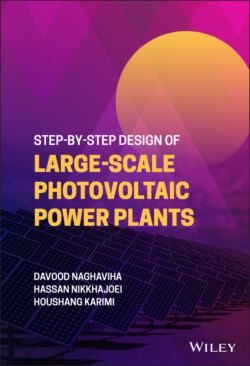Читать книгу Step-by-Step Design of Large-Scale Photovoltaic Power Plants - Houshang Karimi - Страница 19
1.3 Global PV Power Plants
ОглавлениеIn the last two decades, significant numbers of PV power plants have been installed worldwide. The cumulative installed capacity of PV plants by the end of 2020 has reached about 751 GW. There are few reasons for investing in solar plants. The most important ones are:
1 The economic incentives that some countries grant the investors by providing subsidies or purchasing PV power at high rates. Such incentives are included in the guaranteed electricity purchase tariff and are defined as a refund for the installed PV plants.
2 The improvement in the efficiency of PV modules in recent years. Figure 1.12 shows the curves of the efficiency improvement of PV modules for monocrystals and polycrystals from 2010 to 2020 [9].
3 The reduction in the costs of inverters and PV modules in recent years. The number of manufacturers of inverters and PV modules has significantly increased over the past few years. Due to the competitive market, the price of solar inverters and PV modules has been declining to date. Reducing the costs of equipment has led to generating more economical energy from PV plants. Figures 1.13 and 1.14 show the cost trends of solar inverters and PV modules from 2010 to 2020, respectively [9].Figure 1.12 Average module efficiency, 2010–2020.Source: Modified from Feldman et al. [9].Figure 1.13 Utility‐scale and commercial inverter prices, 2010–2020.Source: Modified from Feldman et al. [9].
4 Producing electric power from the sun is viable in most places and it helps to reduce the earth's greenhouse gases. Following the Paris Climate Accords, adopted in December 2015, an effective way taken by most countries to reduce the greenhouse gases has been to construct more numbers of PV plants. The Paris Agreement aims to achieve a neutral climate without greenhouse gas emissions by 2050.Figure 1.14 PV modules prices, 2015–2020.Source: Modified from Feldman et al. [9].
